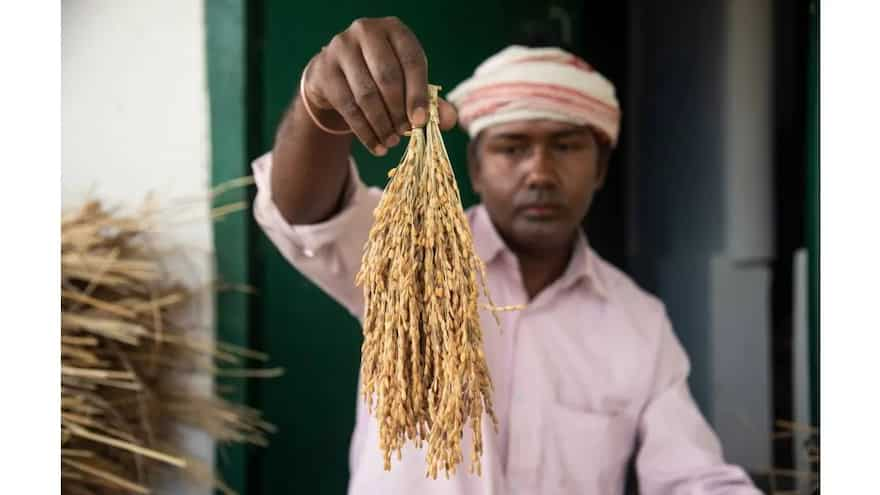AMID A VERDANT STRETCH OF LAND in Meleng, Jorhat, sits an unassuming single-storey structure. A covered verandah at the front offers enough space for a few people to sit and work. Against one of the pillars that supports the sloping tin roof, a banner proclaims: “ANNAPURNA SEED LIBRARY”. Contained within this squat building is a treasure whose worth cannot be estimated. This is where, for the past decade-and-a-half, Mahan Chandra Borah — a history graduate-turned-farmer — has been hard at work, preserving the seeds of several different strains of indigenous rice. Borah has catalogued no fewer than 400 varieties.
The Northeast of India is often referred to as the “motherland of paddy”. In the state of Assam, the rice cultivars are broadly categorised as sali (winter), ahu (autumn), boro (summer) and bao (deepwater). Each of these rice cultivars has a combination of unique traits, depending on starch content, stickiness etc. But to meet the growing demand for rice and for greater ease of cultivation and higher yields, farmers in the region (as elsewhere in India) have turned to hybrid varieties. This has led to the traditional, indigenous strains of rice fading in prominence, and indeed in some cases, going extinct altogether.
Experts say Joha rice varieties are on the cusp of extinction; others, such as Dumai, Murali have been classified as “threatened”. Dol Kosu, Gezep Sali, Sial Sali, Vokot Sali, Joldubi Sali and Sohagmani are reportedly impossible to find any longer. It is in this scenario that Borah’s endeavour is unfolding. At Annapurna, Borah can showcase traditional varieties like Tulsi Sali, Joha, Burma Black, Shyamal and Kokua Bora, to name just a few.
The importance of an initiative like this cannot be emphasised enough. In terms of food security and resilience, adaptability to a changing climate and nutritional content, heirloom rice varieties are positioned to perform well. Diversity of crops is essential to prevent famines in case one strain is under attack. The indigenous strains are also noted as being “low maintenance” in terms of cultivation, and beneficial to farmers in the long run.
Annapurna Seed Library is very much a community programme in how Borah runs it. He makes indigenous seed varieties available to farmers in the area free of cost. The only condition is that a portion of the yield must be brought back to the Library, and swapped with other members. In order to collect and document the various strains, farmers bring Borah seeds and he plants them to create a greater pool to distribute among others. It is from such rooted efforts that a quiet rice revolution has grown.
Here’s a look at the work of Annapurna Seed Library, in photos:
(Below) Different types of rice seeds are seen arranged in bottles at Annapurna Seed Library, at Meleng Kathgaon village in Jorhat district of Assam.

The founder of Annapurna Seed Library, Mahan Chandra Borah arranges rice seeds at the Library. As envisaged by Borah, the Annapurna Seed Library is a community-based initiative aimed at preserving indigenous seed varieties and promoting sustainable agriculture in the region.

***

Bunches of rice seeds at Annapurna Seed Library.

***

Mahan Chandra Borah arranges different types of seeds at the Annapurna Seed Library.

Borah at work.

***

Volunteers carry clay pots to preserve rice seeds as they arrive at Annapurna Seed Library.

Women volunteers working at Annapurna Seed Library.

Borah showcases a bunch of rice seeds.

Volunteers fill rice seeds in clay pots that are covered with cow dung and mud.

***

***

Borah arranges rice seeds at the Library.

Borah works with a volunteer at the Annapurna Seed Library at Jorhat.

All photos © David Talukdar for Slurrp.


